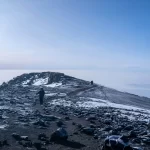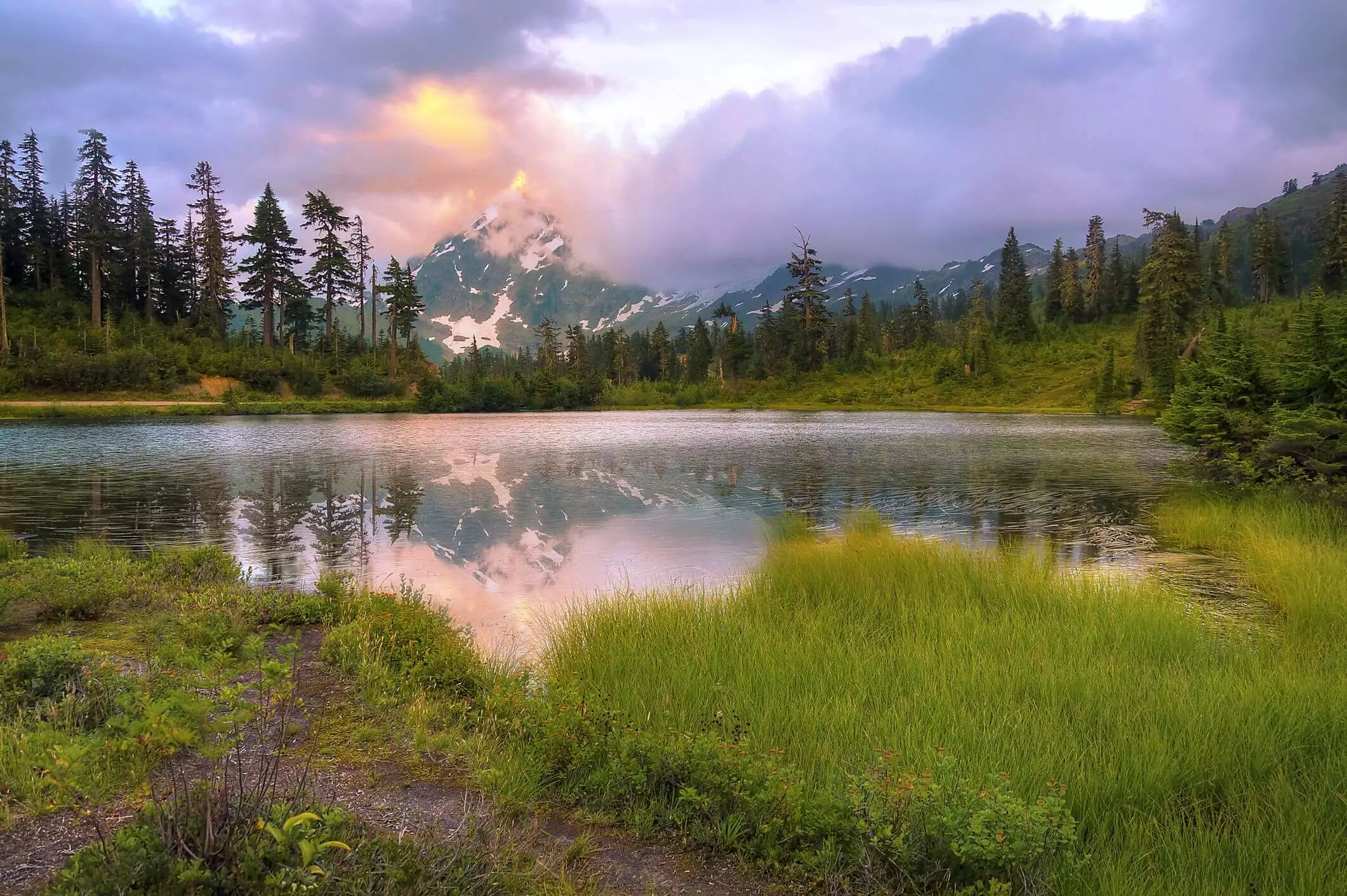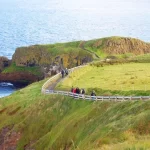Rainbow Mountain, or Vinicunca, is one of Peru’s most captivating natural wonders, known for its vibrant hues and striking location high in the Andes. But the mountain’s beauty comes with a challenge: reaching Rainbow Mountain’s summit requires an intense high-altitude hike that draws adventurers and nature enthusiasts from around the world.
At an Rainbow mountain elevation of about 5,200 meters (17,060 feet), hikers not only encounter breathtaking views but also experience a significant altitude change, which can lead to altitude sickness if they are unprepared. In this guide, we’ll explore everything you need to know about Rainbow Mountain’s elevation, the elevation gain on the hike, tips for avoiding altitude sickness, and what awaits at the summit.
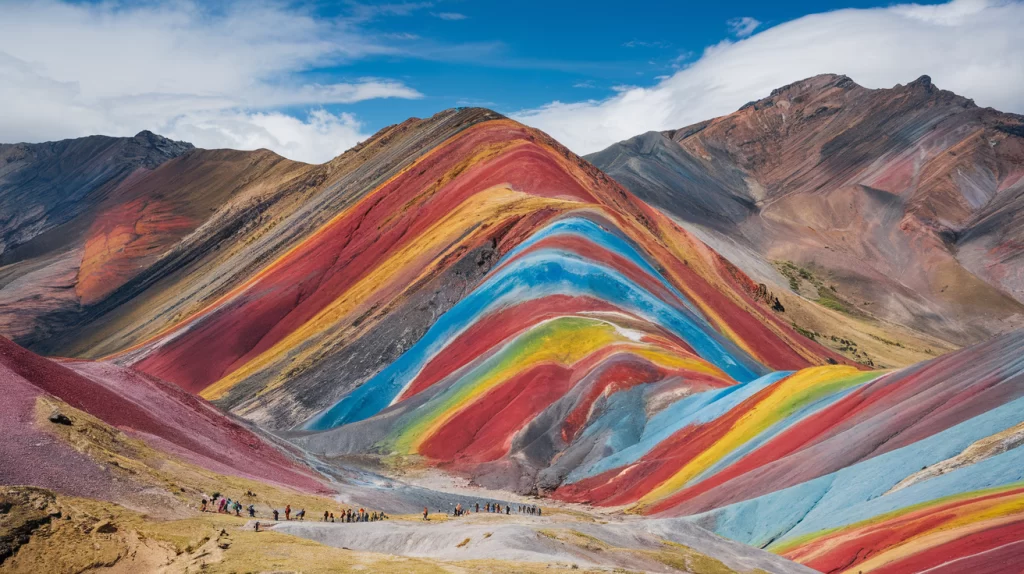
Content
What Makes Rainbow Mountain So Unique?
Understanding the Beauty of Rainbow Mountain, Peru
Rainbow Mountain’s appeal lies not only in its impressive elevation but in its unique appearance. Its mineral-rich layers create stunning bands of colors, from red and pink to green and yellow, resembling a painted rainbow across the rock. This coloration comes from a variety of minerals like iron oxide, magnesium, and copper that have accumulated in sediment over millions of years.
The Attraction of Rainbow Mountain Elevation
The mountain’s high elevation amplifies its allure; the extreme altitude and remote location make it a bucket-list destination for hikers seeking both scenic beauty and a physically demanding Travel adventure.
The Elevation of Rainbow Mountain: How High Is It?
Rainbow Mountain stands at around 5,200 meters (17,060 feet) above sea level, one of the highest accessible peaks in the Andes. Its high elevation gives it a unique vantage point with views stretching across the rugged mountain landscape. To put this in perspective, Rainbow Mountain is higher than the Mont Blanc in the Alps and only slightly lower than Peru’s Mount Ausangate, another popular high-altitude trekking destination.
Elevation Gain: The Climb to Rainbow Mountain
Rainbow Mountain Elevation Gain: What to Expect on the Hike
The Rainbow Mountain trail begins at an already high starting point, around 4,300 meters (14,107 feet) above sea level, meaning hikers need to tackle a gain of approximately 900 meters (2,953 feet) to reach the summit. The hike typically takes 1.5 to 2 hours, depending on a hiker’s physical fitness, pace, and acclimatization to the altitude.
Tips for Managing Elevation Gain
While the path to the summit is generally accessible, the high altitude and steep sections can be strenuous. To manage the elevation gain, maintain a steady pace, take regular breaks, and drink plenty of water. Some trekkers also bring coca leaves or altitude sickness tablets, common remedies in Peru, to help with altitude adaptation.
Altitude Sickness: Precautions for Hiking at Rainbow Mountain’s Elevation
How to Handle Altitude Sickness at Rainbow Mountain Elevation
Altitude sickness is a real risk when hiking at Rainbow Mountain’s elevation. Often occurring above 2,500 meters, altitude sickness can lead to symptoms such as headaches, dizziness, and nausea, especially for those who haven’t acclimatized.
Signs and Symptoms to Watch For
Common signs of altitude sickness include lightheadedness, fatigue, nausea, and shortness of breath. Severe altitude sickness may cause chest pain and confusion, requiring immediate descent to a lower elevation.
Prevention Tips for Hikers
To avoid altitude sickness, plan to spend a few days in Cusco (3,400 meters) to acclimate before attempting the hike. Stay hydrated, avoid alcohol, and ascend slowly. Some trekkers also chew coca leaves or drink coca tea, traditional Andean remedies believed to ease symptoms.
Essential Tips for a Successful Rainbow Mountain Elevation Hike
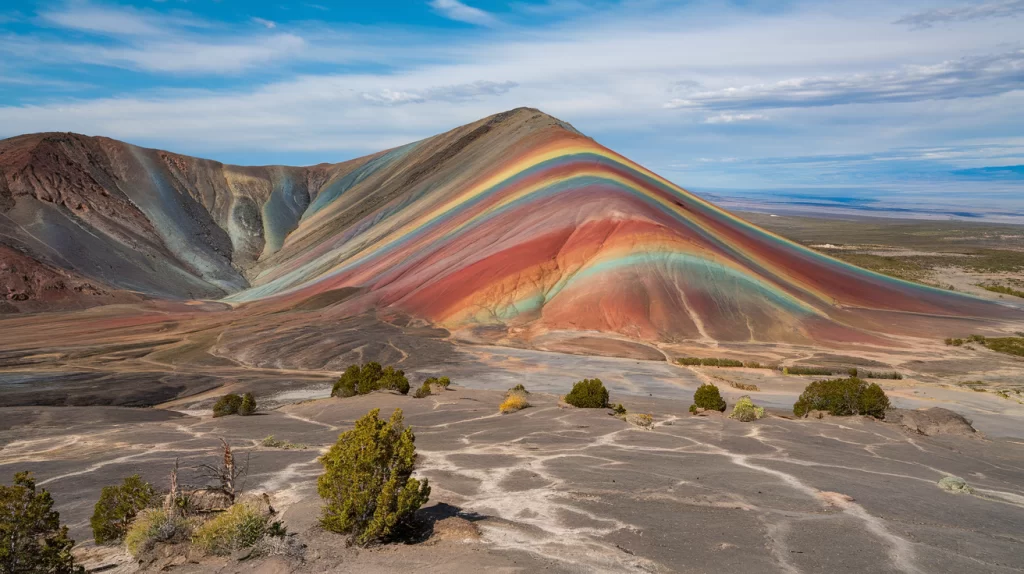
Preparation Tips for Conquering Rainbow Mountain Elevation
Hiking Rainbow Mountain is best done with proper preparation to ensure a safe and enjoyable experience. Here are some essential tips:
Best Time to Visit
The dry season, from April to October, is the most popular time to hike Rainbow Mountain. During this period, you’re more likely to experience clear skies, ideal for capturing the mountain’s vibrant colors.
What to Bring
Pack essentials such as warm clothing (temperatures can drop at high altitudes), sunscreen (the UV index is high at elevation), plenty of water, and energy-boosting snacks. Comfortable hiking boots are also crucial to handle rocky and sometimes slippery paths.
Physical Fitness and Training Tips
While the trail isn’t technically difficult, the high altitude makes it physically demanding. Building up cardiovascular endurance and practicing hiking at higher elevations can help your body adjust to the thinner air.
What to Expect at the Top of Rainbow Mountain: Views and Experiences
Stunning Views at Rainbow Mountain’s High Elevation
Once you reach the summit, you’ll be rewarded with breathtaking views of the surrounding Andean landscape. The mountain’s colorful bands, contrasting with the bright blue sky and rugged terrain, create a surreal panorama.
Photography Tips
To capture the mountain’s true colors, aim for early morning or late afternoon when the lighting is softer. Bring a polarizing filter to enhance the colors and consider a wide-angle lens for panoramic shots.
What Else You’ll See
Aside from the mountain’s famous colors, you may also spot native wildlife such as alpacas and llamas grazing along the trail. You’ll likely encounter other hikers from around the world, as well as local shepherds who live nearby.
Nearby Attractions to Explore After Rainbow Mountain
Other High-Elevation Wonders Near Rainbow Mountain
Rainbow Mountain isn’t the only stunning landscape in the region. The nearby Red Valley, another high-elevation destination, offers dramatic red soil and sweeping views, creating a beautiful contrast to the colors of Rainbow Mountain.
Cusco and Sacred Valley
Cusco serves as the main base for hikers acclimatizing before trekking to Rainbow Mountain. Afterward, take time to explore other treasures of the Sacred Valley, such as Machu Picchu and the salt terraces of Maras.
Conclusion
While Rainbow Mountain’s elevation presents a physical challenge, the reward is an unforgettable experience in one of the world’s most stunning landscapes. By preparing for the altitude, staying hydrated, and pacing yourself, you can enjoy a safe and fulfilling journey to the summit. Rainbow Mountain is a place where natural beauty, adventure, and personal accomplishment come together, making it a must-visit destination for any traveler to Peru.

An avid traveler, Kirk Grover has been to over 50 countries. He has an extensive background in tourism and hospitality management, along with a degree in Hospitality Management from the University of Nevada Las Vegas. Kirk is very knowledgeable about travel-related topics – they are always up to date on the latest deals for flights, hotels, and other adventures around the world.
